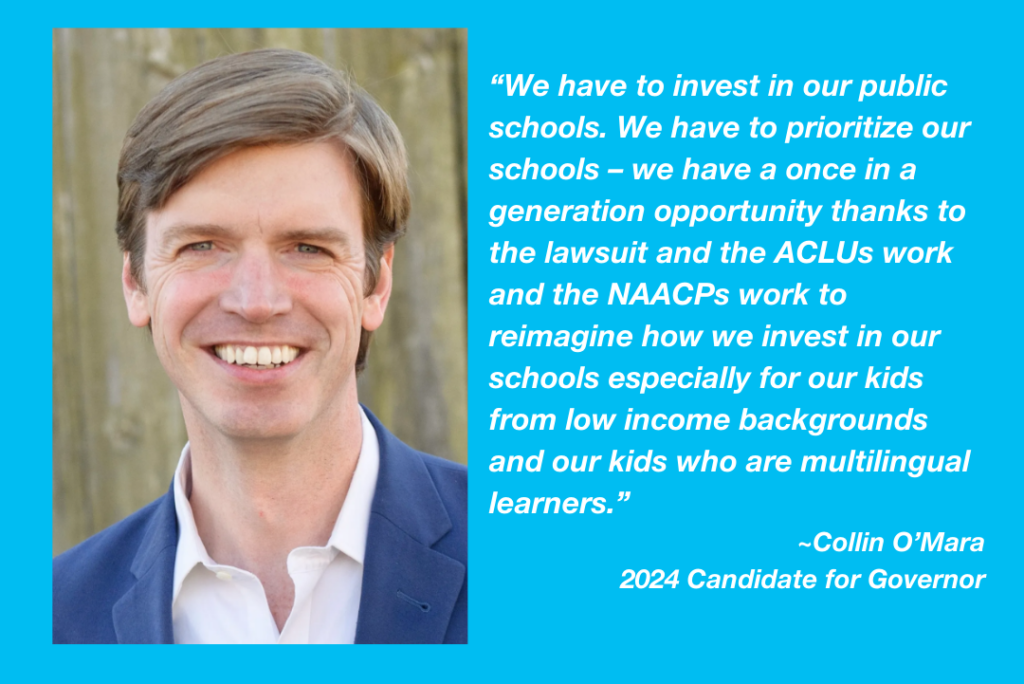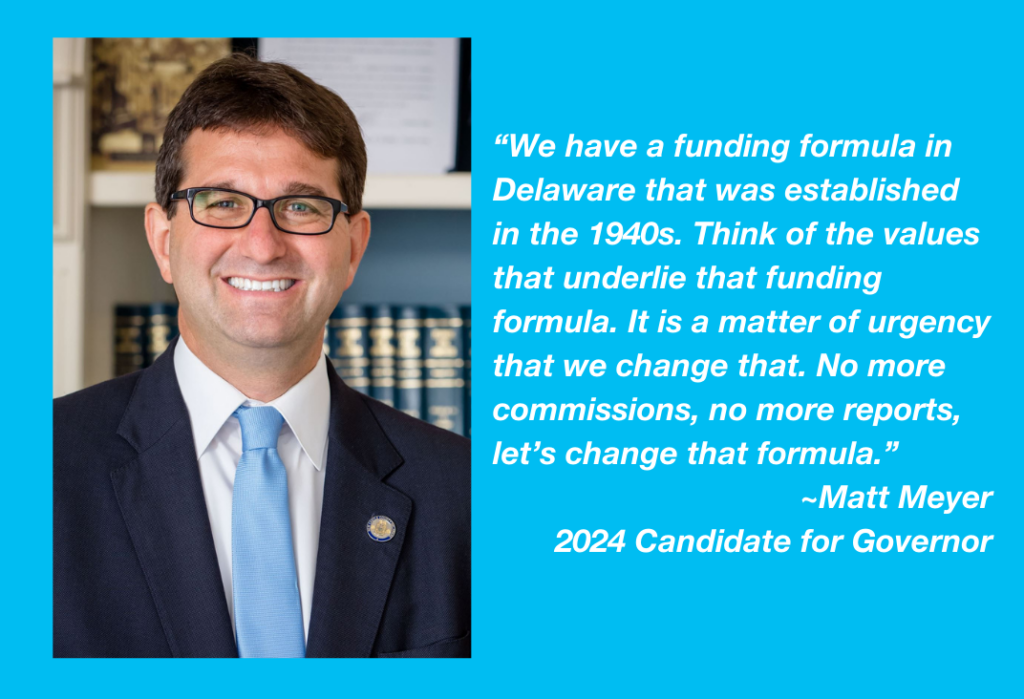
Delaware continues to move forward and engage in the important conversation on public school funding. Governor Matt Meyer’s Administration and Secretary of Education Cindy Marten have both expressed that modernizing the public school funding formula is a high priority in the coming years. So, what has been happening in this work?
Public Education Funding Commission
The Public Education Funding Commission (PEFC) has continued to meet and has now held two meetings with the new members that were added in the January renewal.
In February, the commission took time to introduce these new members, and to align on a set of principles that would become the basis for a funding formula that would be used when reviewing any future models that were presented to the commission. These principles stipulate any formula would be:
- Adequate: Ensure that funding is adequate to meet school/student needs
- Equitable: Funding should be adjusted for local wealth and student needs
- Flexible: Allow for greater flexibility in how funds are expended
- Targeted: Provide additional funding to high-need student groups (special education, low-income, multilingual learners [MLLs], etc.)
- Staff Protections: The formula should contain greater for teachers and other school staff (such as maintaining the salary schedule, smaller class sizes, etc.)
- Streamlined: A new system should reduce the administrative burden on schools
- Transparent: Greater clarity on how funds are generated and expended
In March, the commission heard from Jesse Levin, a principal economic researcher from the American Institutes of Research on a key part of their report the results of the professional judgement panels. These panels of professional educators determined what programming would be required to adequately educate students, creating an input-based analysis of what “adequacy” could look like.
What Do Educators Say Schools Need?
- Improved classroom conditions including smaller class sizes and two adults in every classroom
- Additional opportunities for professional learning during the regular school day
- School staffing and resources
- Lower ratios for school psychologists, school counselors, and social workers
- Additional full-time support staff such as: nurses; occupational therapists;
- Increased resources for high-need schools such as:
- Basic needs like food pantries, wellness centers, psychologists
- Additional staff to support MLL and special needs students
- MLL curriculum support, including books and curriculum in home languages
- Extended school day and enrichment activities such as field trips, funding for athletics, band
- Universal pre-K
To read more about the professional judgement panels and the results see the Vision Coalition background document.
This conversation recentered the work back on those who are the most impacted, educators and students.
The commission will be meeting again on April 14 to see the first set of new funding formula models. The Vision Coalition of Delaware has released a tool to provide a crosswalk with AIR’s recommendations, SEE 2035, and national research.
What Else is Going on in Education Funding?
Equalization Committee
The Equalization Committee continues to meet, and Public Consulting Group has presented the committee with an initial set of recommendations on how to modernize the equalization formula. These recommendations are in line with PEFC’s direction, as well as with national trends.
- Recommendation 1: Simplify the Formula
- Focus the calculation and distribution of funds more on students and
- Use assessed value of property rather than projected sales or market value
- Recommendation 2: Modernize the Approach to Equalization
- Streamline certain taxes into operating budget
- Treat New Castle County tax pool districts individually
- Recommendation 3: Provide Statute to Mitigate Against Risk
- Phase in formula over five years
- Make sure districts have predictability and stability with equalization funds
The committee will hear final recommendations in October of 2025.
Reassessment Appeals and Final Determinations
Delaware’s property reassessment process continues, and the window for homeowners to make appeals has now ended Final numbers are expected in fall of 2025, and school districts are now weighing how much they may increase the local school property tax. Post-reassessment, Delaware school districts may increase up to 10 percent of total revenue but may choose to raise less, as well.
Vision Coalition Student Equity and Excellence 2035 Released
On March 24, the Vision Coalition of Delaware released Student Equity and Excellence 2035, a policy roadmap for the next 10 years.
This plan includes recommendations related to funding including:
- Distribute more resources according to student need
- Adequately fund schools to pay educators and school staff competitively
- Allow more flexibility in how funding is spent and remove administrative burdens
- Provide state funding to account for local wealth inequities and reform the referendum process
- Provide transparency and predictability in the funding formula
- Simplify how charter schools are funded


 As part of the analysis undertaken by AIR, a research firm based in Arlington, Va., “professional judgement panels” were assembled with those with the most knowledge of this system, like classroom teachers, principals, and other district- and school-level employees, to develop recommendations of what it would take to adequately educate every child.
As part of the analysis undertaken by AIR, a research firm based in Arlington, Va., “professional judgement panels” were assembled with those with the most knowledge of this system, like classroom teachers, principals, and other district- and school-level employees, to develop recommendations of what it would take to adequately educate every child.


